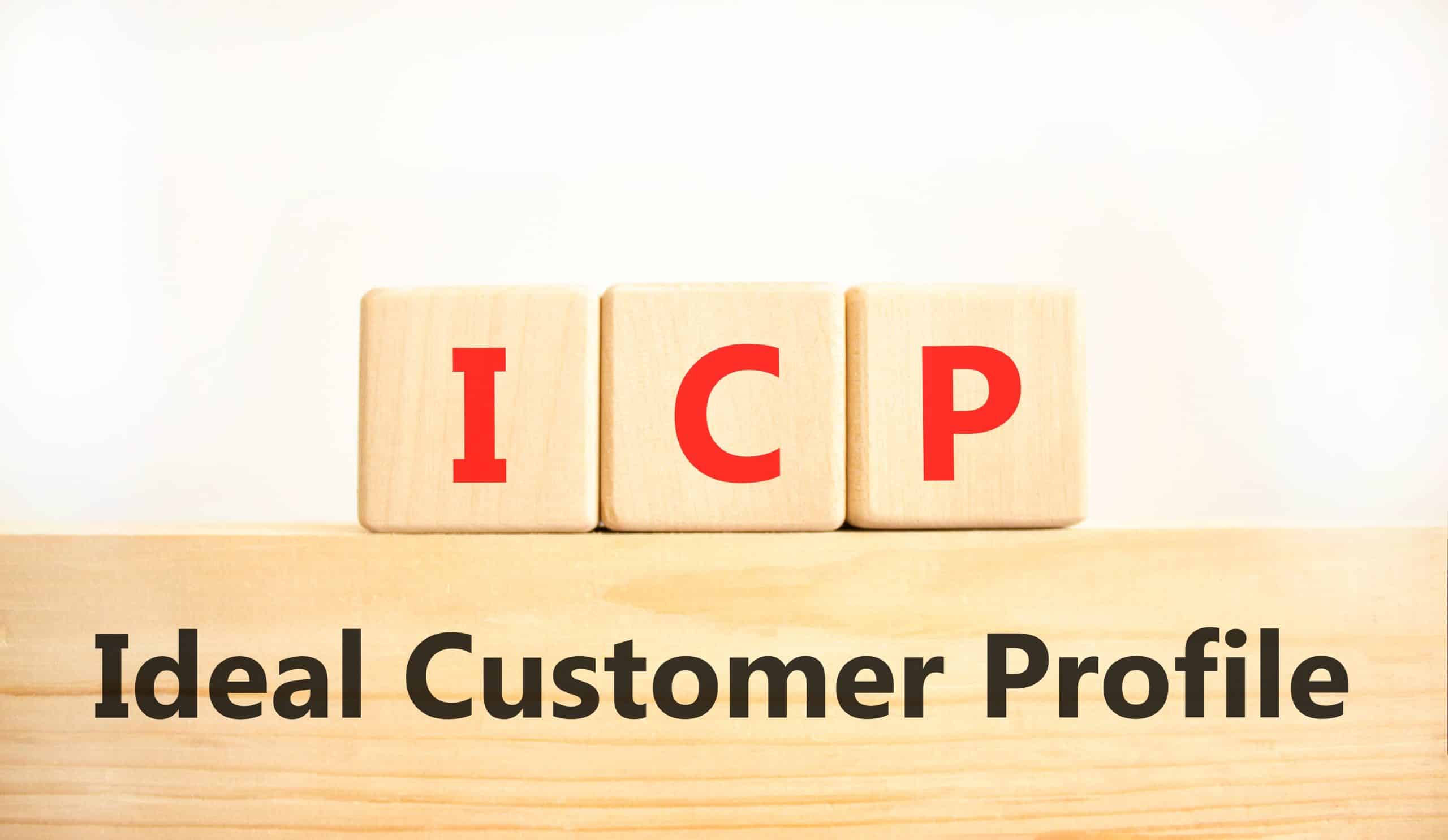- What Is an Ideal Customer Profile?
- Importance of an ICP in Your Marketing Strategy
- Key Benefits of Building an ICP
- ICP vs Buyer Persona
- How to Build an ICP
- What Data and Metrics Should I Use to Build My ICP?
- How to Use an ICP to Improve Lead Generation and Targeting
- What Are Common Mistakes to Avoid When Defining and Using an ICP?
- Key Takeaways
- Frequently asked questions (FAQs)
Say you owned a company that exclusively made jackets for men with a 42-inch chest size and a 34-inch waist, who stood six-foot-two-inches tall and who had arms measuring from shoulder to fingertip exactly 37 inches.
Now, for starters, many people would rightly advise you that you were probably a bit too specific in your product inventory. But, no one could say it would not be very easy for you to come up with what marketers call an “ideal customer profile.” For you, it would be a man of the exact dimensions laid out above. As it happens, an ideal customer profile can be quite useful for advertisers to use even when it’s not quite so specific.
What Is an Ideal Customer Profile?
An ideal customer profile, often referred to as ICP, is a detailed, well-reasoned, and researched description of a hypothetical customer who would best benefit from, and most appreciate, your products or services, and who would theoretically be the most valuable customer for your business.
An ICP is a way to think about and focus your marketing efforts, seeking the most promising leads. It incorporates that old wisdom that you can’t be all things to all people; rather than trying to appeal to everyone, you try especially hard to appeal to your perfect customer. In so doing, you will also appeal to people who are adjacent to the ICP in many ways.
Importance of an ICP in Your Marketing Strategy
An ideal customer profile is highly important for a successful marketing strategy because it helps advertisers identify and then target their most valuable potential customers. Use of an ICP as you create marketing campaigns can lead to increased efficiency, better return on ad spend (ROAS), higher conversion rates, and ultimately, better business performance and less wasted time, effort, and money.
By defining who your ideal customers would be, you can better focus your marketing efforts, personalize your messaging, and allocate resources more effectively.
Key Benefits of Building an ICP
Once you have a solid ideal customer profile created (or a few ICPs, if you offer a wider range of products or services), you can see how ICPs help in the creation of marketing materials and whole campaigns. They will assist with:
Targeted Marketing
When you have a real sense of who your best customer would be, you can go out and find them, meeting them where they are with your ads. Would your ideal customer frequent this or that social media platform, this or that type of YouTube channel, or this or that news site, for example? Then spend money to place your ads appropriately. Would your ideal customer be more likely to respond to a video ad or to open an email? Would they be more likely to appreciate humor or informative content? The more you know about them, the better you can reach them.
Improved Products and Services
The more you know about your ideal customer, the better you can make products, or the better services you can offer, that they would genuinely enjoy and use. It becomes almost a chicken-and-egg proposition: Are they your ideal customer because of what you already offer, or because of how you tweak things to meet them? The answer to that rhetorical question does not matter — what matters is that you continually refine not only your advertising, but also the products and services you’re hoping to sell to your ideal customer.
Better Customer Retention
Every marketer knows that it’s easier — and cheaper! — to retain existing customers than it is to attract new ones. The better you know your customers, the better you can hold onto them by offering messaging and products they will truly appreciate.
ICP vs Buyer Persona
| ICP | Buyer Persona |
| Type of party you seek. | Specific party you target. |
| Ways customer consumes media. | Actual media consumed (TikTok, e.g.). |
| Examples of habits or pastimes. | Specifics (prefers Orange Theory gym, e.g.). |
| Goals ideal customer may have. | Actual work towards success. |
| Potential customer pain points. | Specific examples of barriers to conversion. |
How to Build an ICP
Define What Would Make a Best Customer
Before you worry about defining your best customer, think through what would make them so. Are you hoping for subscribers? Are you simply looking to drive sales? Are you looking for repeat buyers? Do you want to attract people who will in turn spread the word about your business? Rather than starting with who they are, think of what you want them to do.
Gather the Data
The more you know about your ideal customer, the better. You need to gather all sorts of data, from demographics like age and income levels, to the way they likely use social media, to their usual shopping habits with other brands and so on. You can never have too much data about your customers; even if you don’t use some of it, it’s good to have it.
Engage in A/B Testing
Even if you’re quite confident that you’ve successfully created an ideal customer profile, you need to allow that you might be a bit off in some areas. It’s a good idea to create at least two ICPs, even if they’re relatively similar. Use each of them to engage in different marketing campaigns and see which one performs better.
What Data and Metrics Should I Use to Build My ICP?
The short answer is to use as much data as you can gather, and to use as many metrics as you can. A slightly longer answer is to be sure you use these three considerations:
Demographics
You need to know, as accurately as possible, about your ideal potential customer’s age, gender, location, occupation, and income level, education, and other such basic (and often findable) pieces of information.
Psychographics
This is a knowledge of a person’s values, personality traits, lifestyle, and interests. Do they seem particularly religious? Highly patriotic? Spiritual? And so on.
Buying Habits
The more you can learn about how your would-be customers already spend their money on products and services, the better you can meet them where they are with your marketing efforts.
How to Use an ICP to Improve Lead Generation and Targeting
Targeted Outreach
An ICP can help you identify specific characteristics of your would-be ideal customers, allowing you to focus all lead-generation efforts on those who will be most likely to convert.
Refined Content
You know your audience, so make sure your marketing efforts will resonate with them. Tailor your ads, emails, and other marketing content to be designed for your people, not just for people in general.
Website and App Optimization
Your marketing efforts capture leads, but where they land is what matters when it comes to conversions. Make sure your site or your app (or both) will be a pleasure for your ideal customer to navigate so that they move through to conversion.
What Are Common Mistakes to Avoid When Defining and Using an ICP?
Not Using A/B Testing
Even the best marketers in the business can sometimes misunderstand their potential ideal customers. As mentioned, then, it’s a good idea to create at least two ICPs and to run marketing campaigns based off of each of them. You may find one is notably more successful than the other. If both are a success, consider a third ICP and ad campaign, as you might have a varied base of ideal customers — not running multiple campaigns may leave many of them off the table.
Not Using Hard Data
Your intuition and your understanding of your customer base can and should play a large role in the development of an ICP, but you need to also use hard data, letting information you collect about your customers inform the ICP. Remember, this is not who you would want your ideal customer to be — this is who your ideal customer actually is.
Not Updating Your ICP
People change. It happens to individuals and it happens generationally. You need to rethink and update your ICP now and then to make sure you’re still appealing to your actual potential customer base, not to someone who would have been a customer five years ago
Key Takeaways
An ideal customer profile (ICP) is a detailed description of a hypothetical customer who would benefit most from your product or service. Marketers create ICPs so that they can customize their advertising to people who would genuinely be likely to buy what they are trying to sell, if only they could be made aware of it. ICPs are created using market research about demographics, online behavior, past shopping behavior, and more. The more information a marketer can get, the more accurate the ICP will be. ICPs need to be reevaluated and updated now and then, with a yearly review likely sufficient. This helps ensure you still accurately understand the customer base.
Frequently asked questions (FAQs)
What role does an ICP play in account-based marketing (ABM) strategies?
In account-based marketing strategies, the ICP serves as something of a blueprint for identifying and targeting high-potential accounts. It defines the characteristics of people that are most likely to become valuable repeat customers, allowing marketing teams to focus their efforts on these most promising leads.
Which qualitative and quantitative factors are most important in defining an ICP?
It gets back to those demographic considerations. You need to think about things like income level, location, education level, and other tangible factors, but you also need to consider your potential customers in a more holistic way. Think about their interests, how they spend their time, and so on.
How do I tailor my messaging and content to resonate with my ideal customer?
To tailor your messaging and content to truly resonate with ideal customers, start by deeply understanding who they are, what they need, and how they communicate. Then, create that ICP, segment your audience if you find you have several different ideal customers, and craft targeted content that addresses as many of their specific pain points and desires as possible. Over time, continuously analyze and refine your approach based on performance data, audience feedback, and continued research.



